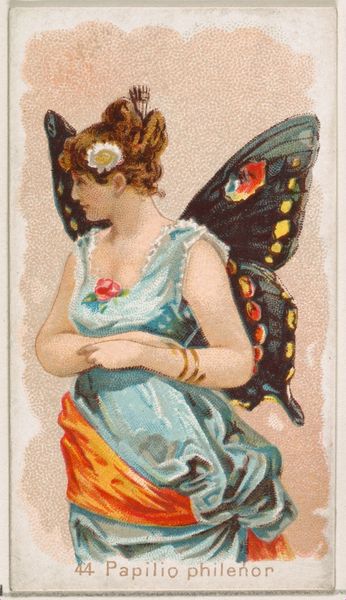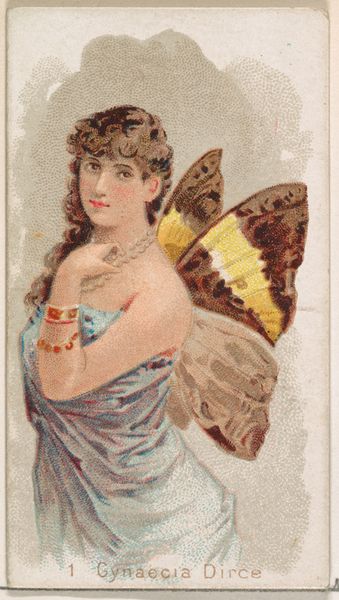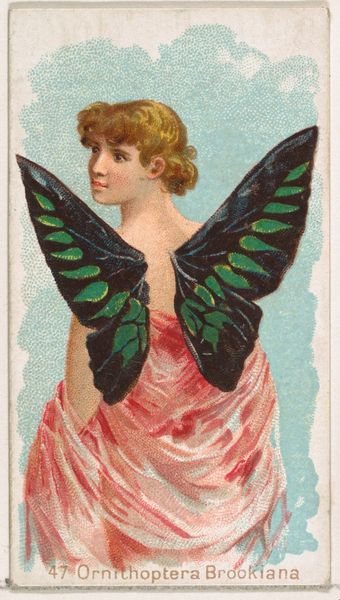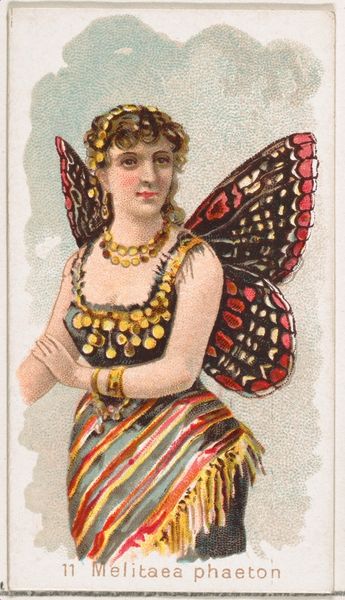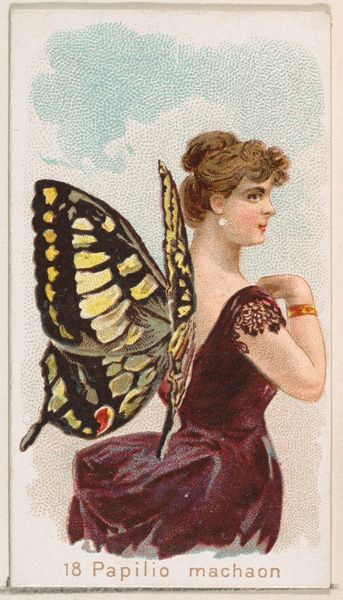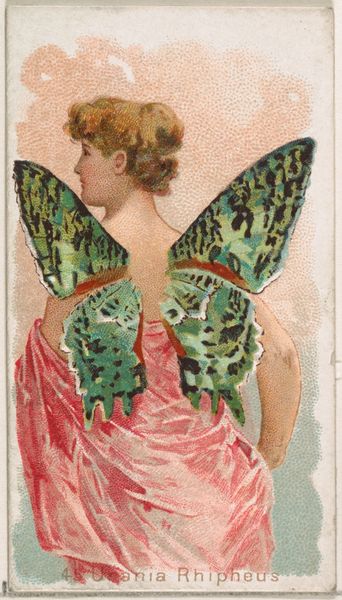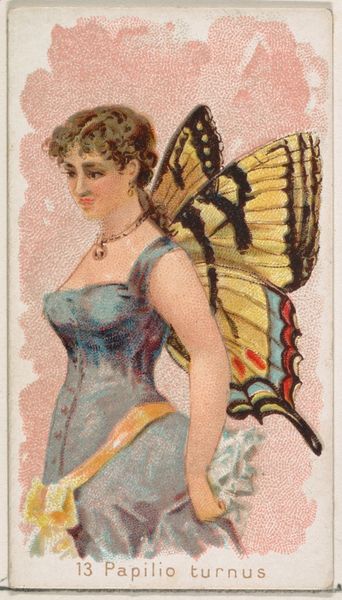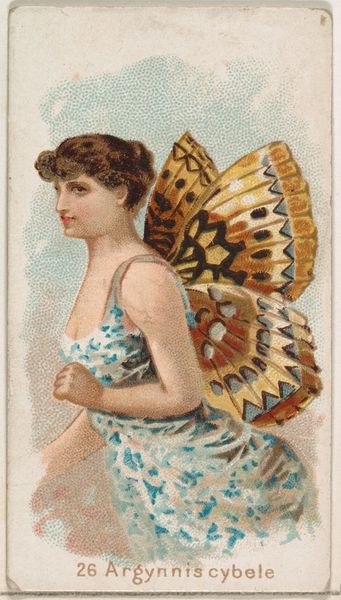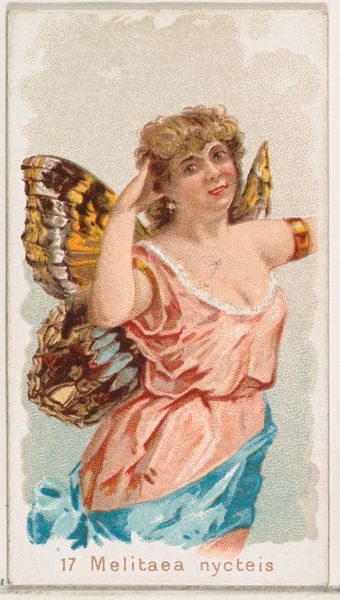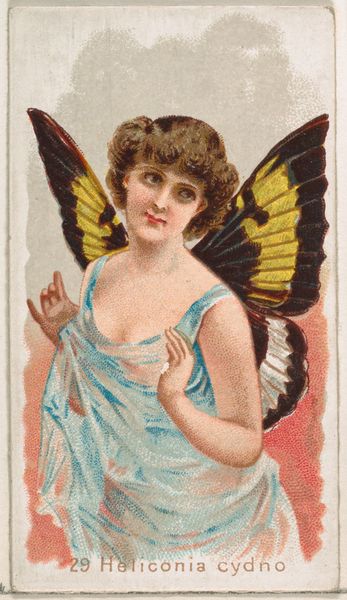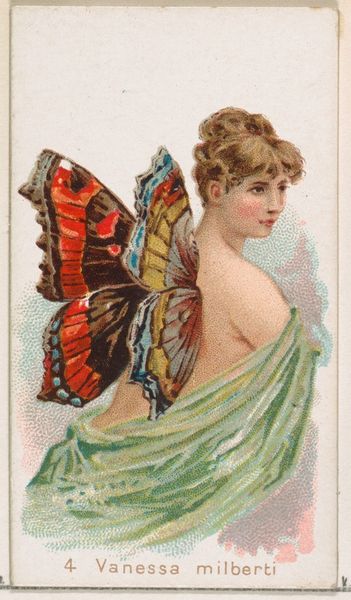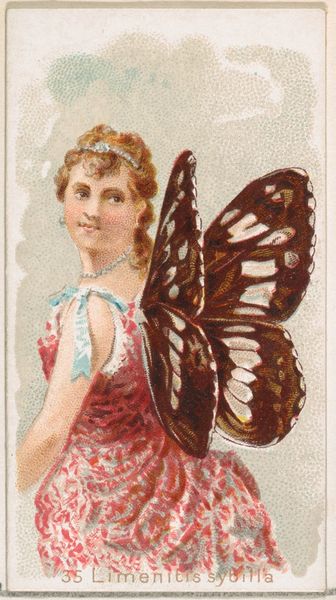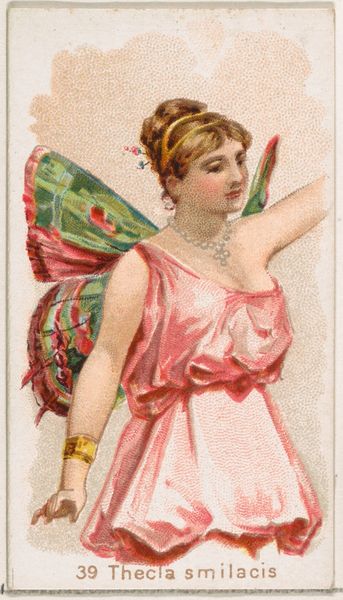
Card 14, Papilio Cresphontes, from the Butterflies series (N183) issued by Wm. S. Kimball & Co. 1888
0:00
0:00
#
portrait
# print
#
figuration
#
oil painting
#
coloured pencil
#
watercolour illustration
#
portrait art
Dimensions: Sheet: 2 11/16 × 1 1/2 in. (6.9 × 3.8 cm)
Copyright: Public Domain
Curator: This rather enchanting piece is "Card 14, Papilio Cresphontes," a print from the Butterflies series by Wm. S. Kimball & Co., dating back to 1888. It's currently part of the Metropolitan Museum of Art's collection. Editor: My first impression is pure visual delight. The colour palette—soft blues and golds, earthy browns, it's surprisingly rich for a print! The figure has an allegorical grace. Curator: Indeed. The artist's use of coloured pencil combined with printmaking is technically compelling. Notice the delicate gradations on the wings, and the stark graphic delineation throughout the subject’s jewelry, clothing, and ornamentation. This imbues the image with a palpable sense of texture and depth, especially considering its function as commercial art. Editor: What fascinates me is this bridge between high art and everyday life. This wasn't meant for a museum; it was distributed with tobacco products! How was this artwork manufactured, distributed, and consumed, touching so many hands? What labour went into it? It is, ostensibly, mass produced. Curator: An intriguing point. In its design and layout, we see an influence of Japonisme, the Western infatuation with Japanese art, reflected in the flat planes of colour and asymmetrical arrangement. The work is a kind of proto-surrealist statement! Note also the stylized rendering of the figure, verging on the abstract, inviting a certain aesthetic interpretation beyond just representation. Editor: It is telling, however, that this style becomes applied for the purposes of commerce! What can the means of producing this artwork tell us about Victorian society's emerging commodification of the "exotic"? About advertising's increasing cultural pervasiveness? Curator: You encourage me to think anew of this delightful yet functional illustration. A testament to how close visual attention, formal and conceptual, brings fresh revelation, whatever our persuasion. Editor: And that close observation helps us contextualize what these artifacts once signified within wider relations of labour, production and social identity. This convergence deepens our appreciation for a work meant, simply, to entertain.
Comments
No comments
Be the first to comment and join the conversation on the ultimate creative platform.
